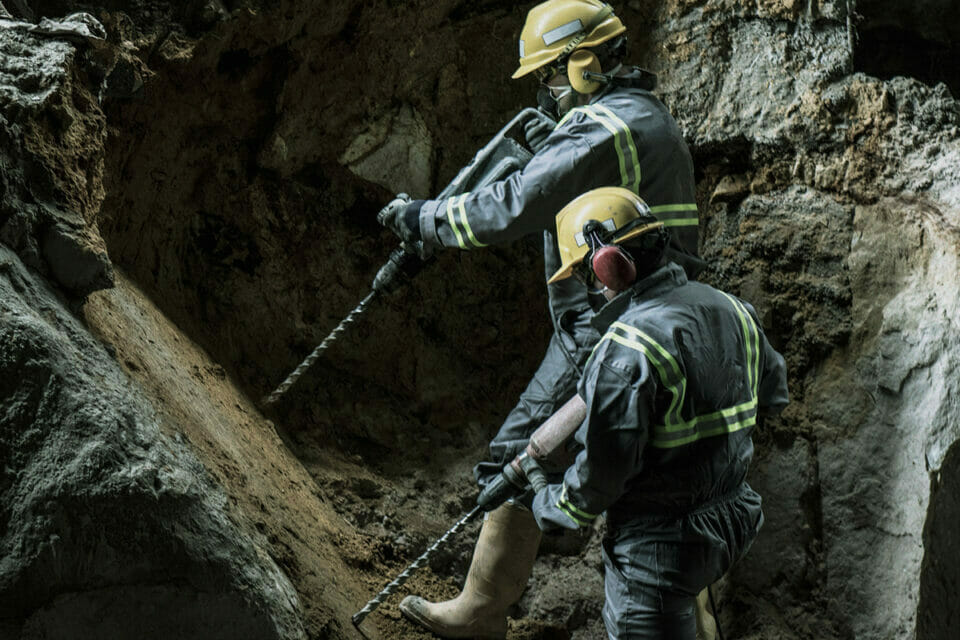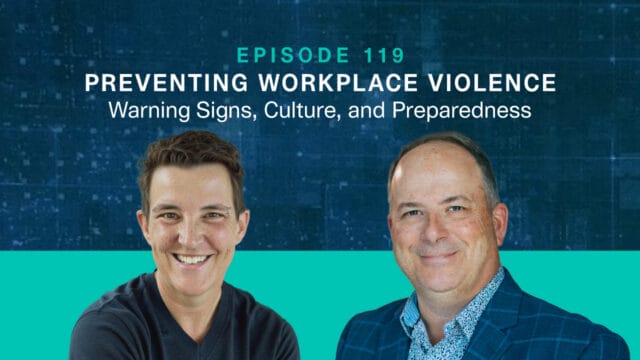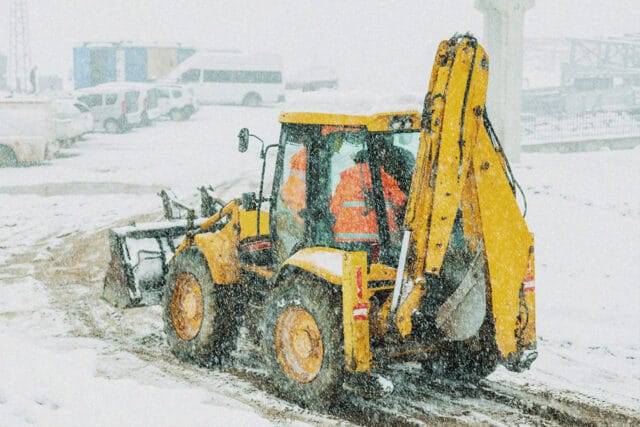
Mining Safety: 7 Hazards to Identify and How to Avoid Them
Companies must identify mining safety hazards and develop mitigation strategies to protect the lives and well-being of their workers.

Although profitability is critical in mining, protecting workers from danger is still a priority, and increasing mining safety must therefore be a primary concern. However, doing so requires identifying and working to prevent common mining hazards, which are only sometimes clear.
This article discusses seven of those hazards and suggests strategies to mitigate them.
7 Hazards to Mining Safety
1. Heat Stress Hazards
Heat stress severely threatens miner health and safety, especially in hot and humid areas. With the physically demanding nature of mining jobs and the weight of their protective gear, miners are more likely to develop heat-related illnesses due to increased body heat production and restricted heat dissipation.
More specifically, prolonged exposure to high temperatures can result in severe and potentially life-threatening complications, including:
- Heat exhaustion
- Heat stroke
- Cardiovascular strain
- Musculoskeletal problems
Mining companies must implement comprehensive heat stress management programs to mitigate these heat stress hazards, which might include the following steps:
- Regularly monitoring environmental conditions
- access to cool rest areas and sufficient hydration
- Scheduling frequent breaks
- Educating workers about the signs and symptoms of heat-related illnesses
By prioritizing heat stress prevention, mining operations can safeguard the well-being of their workforce and support a safer and more productive working environment.
2. Ground Control Hazards
Mining activities pose several ground control hazards compromising workers’ stability and safety. One significant risk is ground collapse when the surrounding geological strata are under too much pressure and suddenly fail or cave in.
These collapses can happen for many reasons, such as:
- Pillar failure
- Over-extraction (excessive mining in a specific area)
- Water inflows
- Seismic events
Two other common ground control hazards are landslides and rockfalls, as mining operations can compromise the stability of the rock mass, allowing loose material to fall and harm workers.
Mining safety teams must establish effective support systems; careful planning and continuing monitoring are necessary to prevent incidents.
3. Respiratory Hazards
The health and safety of miners are also significantly threatened by respiratory hazards in the workplace, and their most significant risk is the inhalation of dangerous dust and airborne particles such as:
- Coal dust
- Asbestos
- Heavy metal dust
- Silica dust
Long-term exposure to these airborne pollutants can cause significant respiratory illnesses such as silicosis and coal miners’ pneumoconiosis (black lung disease). Inadequate ventilation in underground mines can worsen dust buildup and raise the risk of respiratory problems.
Further endangering the workers’ respiratory health are the poisonous airborne chemicals released during mining operations. The following gases are among them:
- Methane
- Radon
- Hydrogen sulfide
- Diesel exhaust emissions
Respiratory protection training is crucial to mitigate these risks. Additionally, companies must set up suitable ventilation systems, offer personal protective equipment like respirators, and routinely check air quality to reduce these risks and safeguard workers from respiratory dangers.
4. Explosions and Fire Hazards
Explosion and fire threats are serious risks affecting workers and the mining infrastructure. In deep mines, flammable gases like methane and hydrogen sulfide create a high-risk environment where even a minor ignition source can cause an explosion.
Additionally, if lit, the buildup of coal dust and other combustible materials in the air can compound the fire threat and result in quick, out-of-control flames. Using fuels and lubricants in mining machinery and equipment significantly increases the fire risk, exceptionally when improperly maintained.
Workers must follow strict mining safety procedures to reduce these risks. Those steps should include the following:
- Monitoring gas regularly
- Installing proper ventilation equipment
- Using explosion-proof equipment
- Placing fire suppression systems and flame-retardant materials in high-risk areas
- Conducting proper training
5. Mobile Equipment Hazards
Misusing heavy, mobile equipment in a dynamic and often challenging environment creates a substantial risk of accidents and injuries. Standard machinery typically associated with these incidents includes the following:
- Trucks
- Loaders
- Excavators
- Drills
A common hazard is collisions between mobile equipment and personnel, especially in busy mining sites with limited visibility. Mobile equipment is also susceptible to overturning on uneven terrain or due to operator error.
To mitigate these hazards, safety teams might consider the following:
- Requiring certification programs
- Performing regular maintenance
- Establishing safety measures such as proximity detection systems, backup cameras, and audible warning signals
Additionally, strict adherence to traffic management plans and clear communication protocols between operators and ground personnel are crucial to prevent accidents and maintain a safe working environment in mining operations.
6. Poor Communication Hazards
Communication issues and hazards in mining can pose severe risks to the safety and efficiency of mining operations. In the vast and often challenging mining environment, effective communication is vital for coordinating tasks, relaying critical information, and responding to emergencies promptly.
However, several factors can lead to communication breakdowns, including the following:
- Remote locations
- Complex geographies,
- Underground work areas
- Language barriers
- Noise
- Limited cellular coverage
Mining companies should invest in robust communication infrastructure to address communication issues, including reliable radio systems, Wi-Fi networks, and emergency alert mechanisms. They should also implement clear communication protocols to ensure that all workers understand how to use communication devices effectively and can convey information accurately.
7. Electrical Hazards
Electrical hazards present significant dangers to the safety of miners, one of the most common being the extensive use of electrical equipment, including the following:
- Motors
- Cables and extension cords
- Lighting systems
- Electric pumps
- Power tools
Overuse can cause damage, increasing the likelihood of sparks around flammable gases and the potential for explosions (as discussed earlier). Additionally, the wet and humid conditions in some mining environments can increase the likelihood of electrical equipment malfunction in already worn-down equipment and pose additional risks to workers.
Safety teams must adopt strict safety procedures to address the risks, including:
- Regular inspections and maintenance of electrical equipment
- Proper grounding and insulation of electrical systems
- Use of explosion-proof electrical devices in hazardous areas
- Comprehensive training on electrical safety and emergency response protocols
By prioritizing electrical safety, mining companies can minimize the risk of accidents and protect the well-being of their workforce.
Maximizing Mining Safety is Critical for Your Business
Mining safety is paramount, as it directly affects the lives and well-being of countless workers worldwide. And effectively doing so requires finding potential hazards and developing strategies to prevent them.
However, as the industry evolves and more risks present themselves, implementing the right risk management solutions could be the defining factor that sets apart successful and responsible mining companies, paving the way for a safer and more sustainable future.
Contact us today to learn more.




